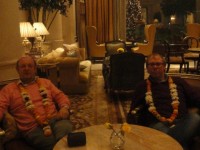
Kushinagar
Kushinagar is a town and a Nagar Panchayat in Kushinagar district of Indian state of Uttar Pradesh located around NH-28, being 52 km east to Gorakhpur city. It is an important Buddhist pilgrimage site, where Buddhists believe Gautama Buddha attained Parinirvana after his death. In ancient times, it was known as Kushavati (Jatakas). It finds mention in epic Ramayana as the city of Kusha the son of Ram, the famous king of Ayodhya. Kushinagar was a celebrated center of the Malla kingdom of ancient India. Later, it would be known as Kushinara, one of the most important four holy sites for Buddhists. At this location, near the Hiranyavati River, Gautama Buddha attained Mahaparinirvana (or ‘Final Nirvana’) after falling ill from eating a meal of a species of mushroom.
Many of the ruined stupas and viharas here date back to 3rd century BCE – 5th century CE when prosperity was at its peak. The Mauryan emperor Ashoka is known to have contributed to significant construction at this site.
Connectivity:
By Air
There are no regular flights from other major cities of the country to Kushinagar. Nearest airport is Gorakhpur Airport( about 50 Kms).
By Rail
Kushinagar does not have an train station. Nearest option is Baitalpur( 26 Kms )
By Road
You can easily get regular buses to Kushinagar from other major cities of the state.
Mahaparinirvana Temple and Stupas, The remains of the Parinirvana Stupa and Parinirvana Temple, when rediscovered, were covered in a 40 foot high mound of bricks surrounded by a dense thorny forest. After E. Buchanan, an officer of the East India Company, arrived in Kasia in the course of his survey-work; H. H. Wilson, in 1854, made the suggestion that ancient Kushinagar and Kasia were the same. Work resumed around 1861–1862 when Alexander Cunningham, the founder of the Archaeological Survey of India suggested the site to be that of Gautama Buddha’s decease.
Linh Son Temple
Thai Temple
Ramkola Satiansuiya Temple
Govt. Buddha Museum Kushinagar, The museum reveals the art, culture and historical facts of ancient India. The nucleus of the collection represents sculpture, terracotta, architectural remains, bronzes, clay seals, thankas and coins. Among the sculptures the museum has a good collection of Mathura and Gandhara schools of art. A large number of artifacts are on display in four galleries. Besides Buddha artifacts, some Hindu and Jain antiquities are also on view. The stucco statue of Lord Buddha in the meditation posture is a superb specimen. It represents the zenith of Gandhara School of art. The beautifully decorated votive stupas and bricks are also on view.















